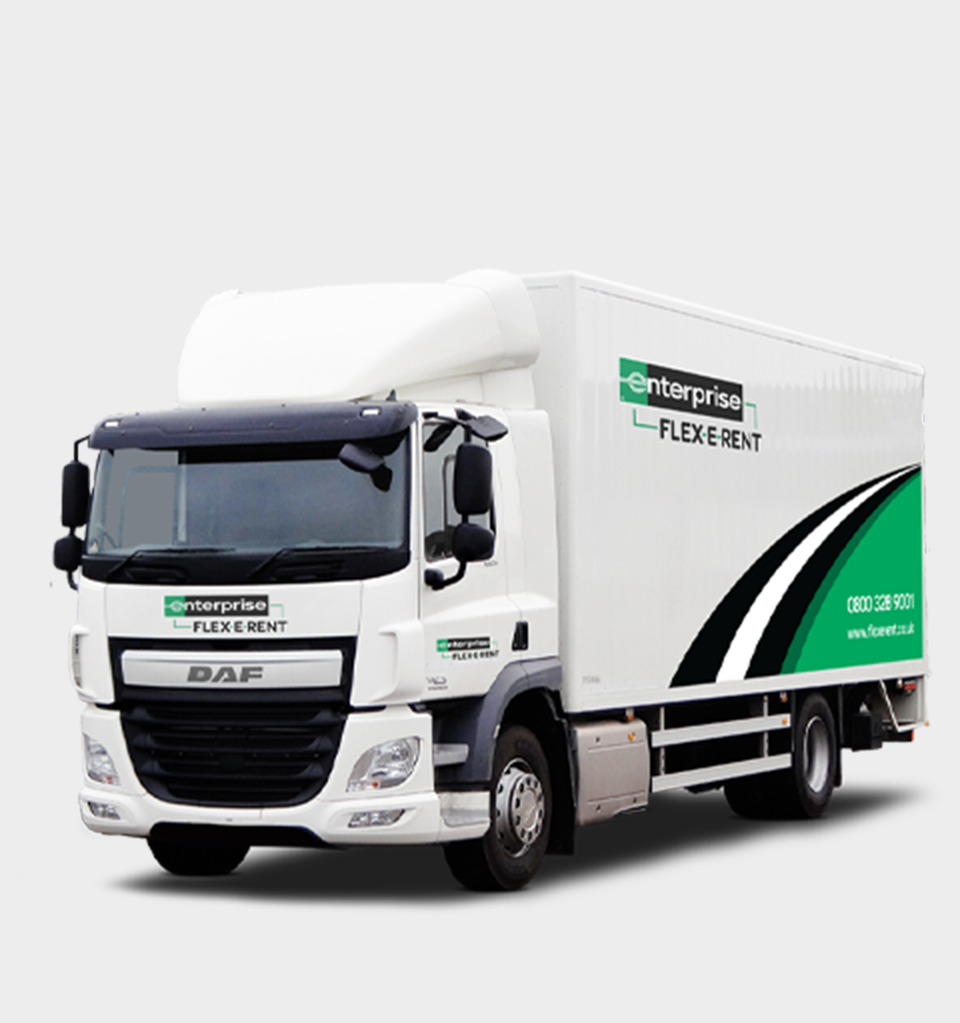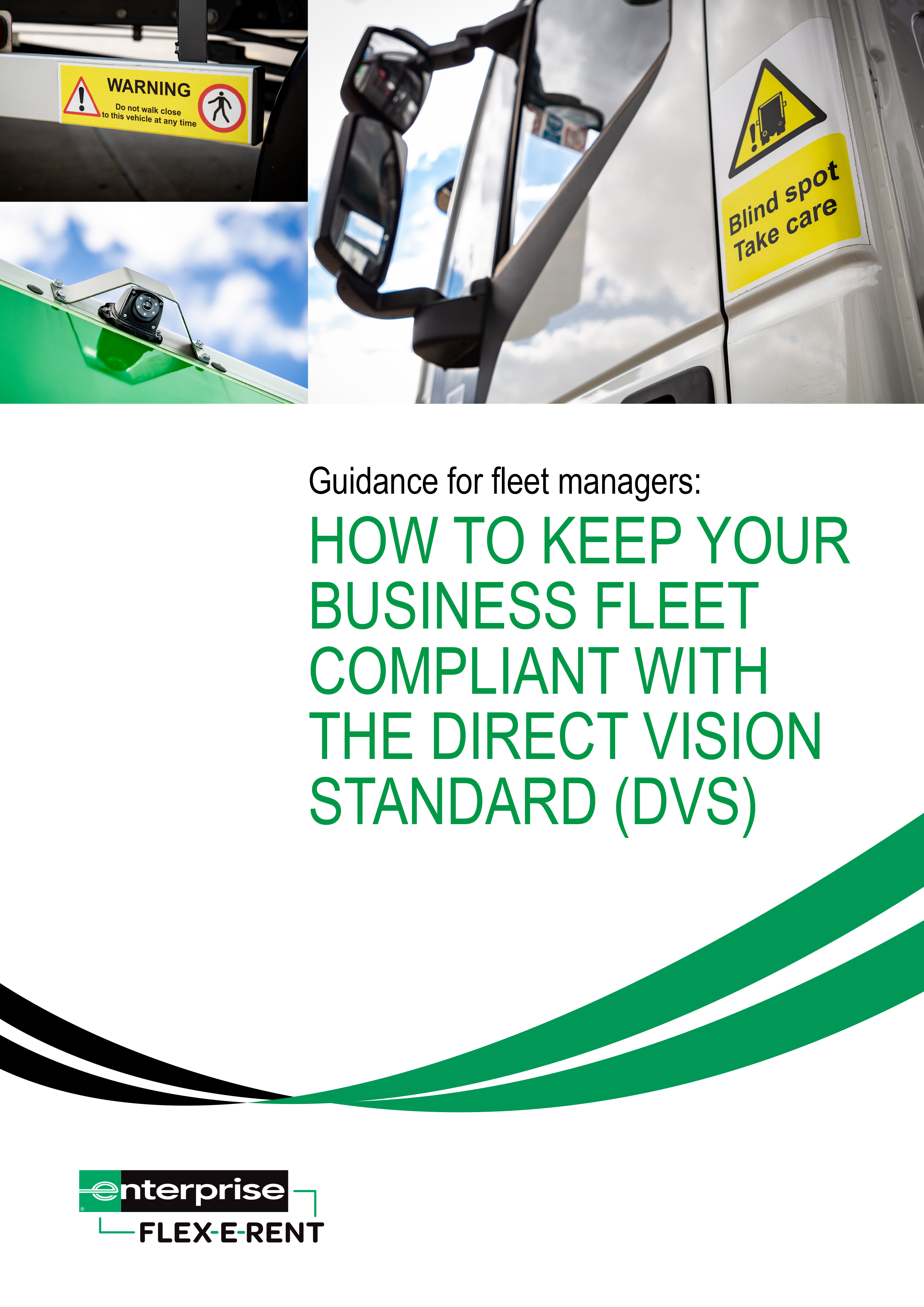Everything you need to know about the Direct Vision Standard
The Direct Vision Standard (DVS) for heavy goods vehicles over 12 tonnes came into force in March 2021 within the Greater London area. This rating system aims to improve overall visibility of drivers of these vehicles to minimise accidents and fatalities.
From 27th October 2024, the minimum required DVS rating will increase from one star to three star.
For businesses who are currently trying to educate themselves on the DVS changes, and the repercussions for not complying, trying to have everything you need to be prepared by 27th October 2024 can be a challenge. However, it doesn’t need to be.
We’ve outlined everything you need to know about the Direct Vision Standard (DVS), from why it was introduced to how you can apply for a permit, and what to do if your vehicle doesn’t meet the minimum star rating - to help keep you compliant, and your vehicles on the road.

Direct Vision Standard - 2023 Updates
January 2024 Update: From 27th October 2024, the minimum DVS rating for HGVs entering and operating in Greater London moves from one star to three stars. Vehicles that have a two star rating or lower must fit the Progressive Safe System (PSS) and provide proof of this to obtain a permit.
The PSS develops on top of the 2019 Safe System. Transport for London consulted with the public from February 2023 to April 2023 and formulated a set of proposals to London Council’s Transport and Environment Committee, who manage the HGV Safety Permit.
In June 2023, the proposals were reviewed and the PSS was confirmed, which included:
- Improving indirect vision with camera monitoring systems (CMS) and sensors
- Warning vulnerable road users of intended manoeuvres with audio warning and warning signs.
- Minimising physical impact of a hazard with the installation of side guards to cover gaps between the vehicle’s wheels
- Improving the scheme application process for operators
What is the Direct Vision Standard (DVS)?
Developed as a part of the Mayor of London’s Vision Zero for London scheme, the Direct Vision Standard (DVS) measures how well HGV drivers can see directly through their cab windows, to indicate the risk level to “vulnerable road users” such as cyclists and pedestrians close to the vehicle. It requires all lorries over 12 tonnes to have a safety permit for heavy goods vehicles (HGVs) in order to operate in the Greater London area.
As of March 2021, all 12 tonne vehicle operators need this safety permit, or risk a £550 fine each time you’re found to be non-compliant. The DVS will operate 24 hours a day, seven days a week, and will be monitored and recorded on ANPR cameras that will digitally capture the licence plate registration of each vehicle operating throughout Greater London and instantly check them against a database of records, where the vehicle will then be issued with a £550 fine.
Since the minimum star rating is increasing from one star to three stars from October 2024, businesses need to begin preparing as soon as possible. If your vehicle(s) is currently rated three stars or more, your current permit is valid for 10 years from issue date. Any vehicles rated from zero to two stars, your DVS will expire on 27 October 2024 and will need to submit another application
Should your DVS rating be less than three stars after 28th October 2024, then you need to retrofit your vehicle(s) with PSS.
Direct Vision Standard Star Rating
The Direct Vision Standard gives all vehicles over 12 tonnes a star rating, measured by how well the driver can see through their windows. This star rating system ranges from 0 to 5, with 5 being excellent direct vision, and 0 being very poor direct vision.
From 27th October 2024, If you receive a star rating between zero and two, you need to add specific PSS improvements to any of your vehicles that aren’t compliant. This applies to all businesses operating with vehicles over 12 tonnes in the Greater London area. Therefore you need to have plans in place to prepare for when the minimum requirements come into play.
Find out more about the DVS requirements in our blog - What Safe System measures are required for zero star vehicles under the Direct Vision Standard (DVS)?
How do I check my vehicle's rating?
Under the DVS system, all vehicles will obtain a star rating. Every vehicle must meet a minimum of one star, unless exempt from the scheme.
In order to get your vehicle’s star rating, you need to contact the manufacturer and request an assessment of DVS star rating, or enquire about the ratings of any new vehicles. To do this, you’ll need to provide the vehicle’s chassis number (VIN), and your manufacturer will be able to calculate the rating. Then, they should inform both you and TfL of the rating, upon which you can submit the vehicle for a safety permit if it meets the minimum requirements.
You can apply for a safety permit on the Transport for London (TFL) website, and fleet operators can apply for 5 to 3,000 vehicles at one time through a multi permit application. If you have a one to five star rating, an electronic permit will be granted.
However, if you receive a star rating between zero and two from your manufacturer, then it’s your responsibility to get the vehicle(s) up to standard through the addition of safety features known as PSS improvements. Then, to submit your application, you will have to upload visual evidence and sensor functionality statements of your PSS equipment. Your application will then be reviewed and accepted (you'll get your safety permit), or rejected (you'll need to re-apply).
What is the Progressive Safe System?
The Progressive Safe System (PSS) are features that can be retrofitted to vehicles in order to improve driver’s visibility and the safety of pedestrians and road users.
However, if you need to add PSS improvements to your vehicles, retrofitting can be a fairly laborious process - especially if you need to register an entire fleet for permits. Retrofitting your existing vehicles also means that they will need to be taken off the road, which often isn’t an option for smaller organisations as it can lead to considerable downtime.
According to TfL, Safe System measures have three key aims:
- To improve indirect vision.
- To warn road users of intended manoeuvres.
- To minimise the physical impact of any hazards.
With this in mind, TfL has also published the 7 key requirements your vehicle will need in order to meet the minimum star rating, and qualify for a permit.
Generally, most vehicles manufactured in the past decade will already have the following 3 safety measures installed as standard:
- Class V mirror on the nearside of the vehicle
- Class VI mirror on the front of the vehicle
- Side under-run protection on both sides of the vehicle (except where this is impractical, or cannot be done)
However, your vehicles will also have to have the following 4 measures fitted to be compliant with the Direct Vision Standard:
External pictorial stickers and markings on vehicles to warn vulnerable road users (pedestrians, cyclists) of any hazards around the vehicle.
A sensor system that alerts the driver to the presence of a vulnerable road user on the nearside of the vehicle.
Audible vehicle manoeuvring warning.
A fully operational camera monitoring system on the nearside of the vehicle.
Your vehicle(s) will need to have these seven listed safety measures fitted, so you must decide how you will go about ensuring your vehicle has them.
What are the alternatives?
First of all, it’s important to note that when it comes to compliance with the DVS - there is no alternative.
At £550 per fine, not complying is not only bad practice but extremely expensive. On top of this, given the emphasis on improving safety in London, it’s likely that other major cities will soon follow suit; we saw this happen with the extension of ULEZ, and much like eco-awareness, road safety is becoming an increasingly dominant issue, and it’s likely the Direct Vision Standard could extend out of London and beyond.
This means now more than ever, you need to be future-proofing your fleet.
Retrofitting your vehicles to comply is an option - but can be very labour-intensive, so it could be worth looking into alternative methods. One method that will ensure your business is ready for the DVS and onwards is through flexible vehicle hire.
The benefits of hiring your vehicles are clear. Hiring a fleet of DVS-compliant vehicles is not only a less laborious and more cost-effective process, but it also ensures that your vehicles are future-proof for years to come - giving you the freedom to operate in London and beyond, without the worry of being fined.



